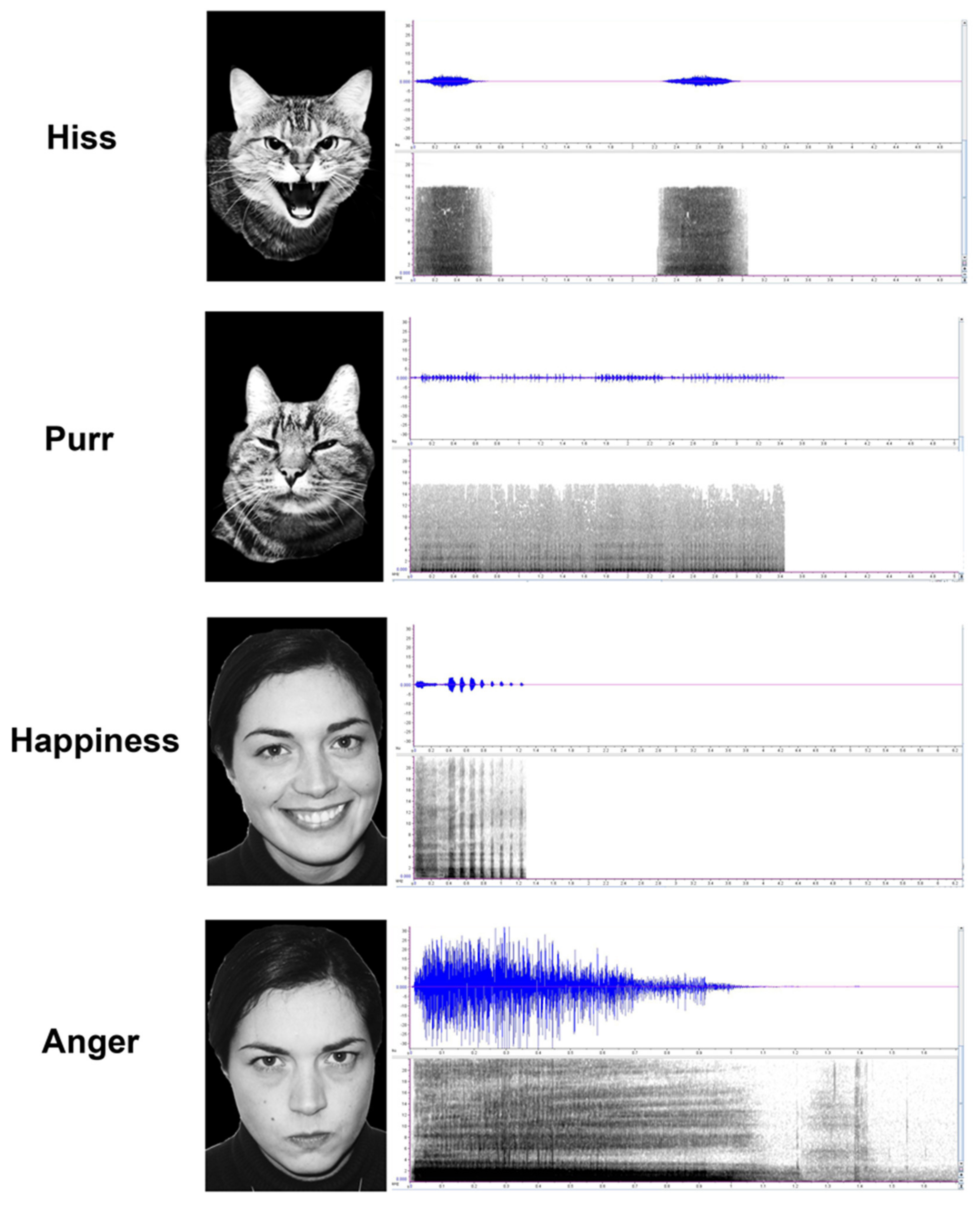 Historically cats have received less research attention than their canine counterparts and their cognitive abilities were less recognized. However, in the last 10 years, research focusing on trying to better understand our feline companions has grown.
Historically cats have received less research attention than their canine counterparts and their cognitive abilities were less recognized. However, in the last 10 years, research focusing on trying to better understand our feline companions has grown.
Emotion Recognition in Cats
A recent 2020 study entitled “Emotion Recognition in Cats” published in the journal Animals demonstrated that cats are able to recognize conspecific as well as human emotions through auditory and visual observations.
In the study, the authors recorded sounds of one male and female cat, each of them in two situations. In the first situation they would hiss and in the second they would purr. Also, a man and a woman were recorded laughing and growling. Finally, a neutral sound was downloaded from the internet. Authors then took photographs of the same cats hissing and purring and of the same people demonstrating a ‘human angry face’ and a ‘human happy face’.

Ten cats were tested in their own homes, in a quiet room, where a projector and screen were installed, and a
speaker was placed behind the screen. Cats were facing the screen, sitting on their owner’s lap.
Each trial consisted of a recorded sound (angry, neutral or happy) emitted by the speaker while two faces were simultaneously projected on the bottom corners of the screen. If the sound was hissing or purring, the ‘hissing cat face’ and ‘purring cat face’ would be projected, and if the sound was laughing or human growling, the ‘human happy face’ and ‘human angry face’ would be projected.
The researchers wanted to know if the cats be able to match sound and face. To answer that question, the duration that the cats spent looking at each face was recorded as well as a whole range of behaviors that could be considered expressions of stress or discomfort. Every trial was filmed by two camcorders. Researchers looked at what face the cat would look at the longest.
The results?
Researchers found that cats looked significantly longer at the face whose expression matched the sound they heard, for ‘cat hiss’, ‘human anger’ and ‘human happiness’, but interestingly, not for ‘cat purr’, maybe because there is not an easy distinguishable face for purring in cats.
They also found that younger cats (three to four years) were better at this task than older cats (five to nine years). Regarding the ‘stress behaviors’, they found that cats displayed significantly more ‘stress behavior’ to ‘cat hiss’ and ‘human anger’ then for any other stimuli.
These results demonstrate that cats integrate visual and auditory signals to recognize human and conspecific emotions. They also appear to modulate their behavior according to the valence of the emotion perceived.
Cats Recognize Facial Expressions?
 Another study by Oakland University researchers Jennifer Vonk and Moriah Galvan in Rochester, Michigan, suggests that cats are more receptive to human emotions than we’ve previously surmised.
Another study by Oakland University researchers Jennifer Vonk and Moriah Galvan in Rochester, Michigan, suggests that cats are more receptive to human emotions than we’ve previously surmised.
Their study involved 12 cats and their owners which showed that felines behave differently based on whether their owners are smiling or frowning. While similar behaviors have previously been documented in domestic dogs, researchers were interested to see if domestic cats – who mostly appear uninterested in their human owners – possess similar abilities.
During their study, researchers observed that cats exhibited more frequent “positive” behaviors – purring, rubbing or sitting on their owner’s lap and spending more time with them – when their owner was smiling. Frowns seemed to produce the opposite effect in the cats.
Researchers also noticed that these cats exhibited similar “positive” behaviors when placed with strangers, regardless of whether the strangers were smiling – as if they were giving the strangers the benefit of the doubt or were trying to put their best foot forward.
All of this suggests that cats can learn how to read owner specific facial expressions over time.
Researchers were careful to note, however, that their findings do not mean cats are capable of feeling empathy. Instead, it seems to indicate that cats have learned to associate their owners’ smiles with rewards and positive attention.
The post How Good Is Your Cat at Emotion Recognition? first appeared on Humintell.
 n
n 
 The researchers found that volunteers more readily recognized—and their brains more efficiently processed—screams that were not considered alerts, including joy, passion, and sadness, compared to the screams of pain, anger, and fear.
The researchers found that volunteers more readily recognized—and their brains more efficiently processed—screams that were not considered alerts, including joy, passion, and sadness, compared to the screams of pain, anger, and fear.